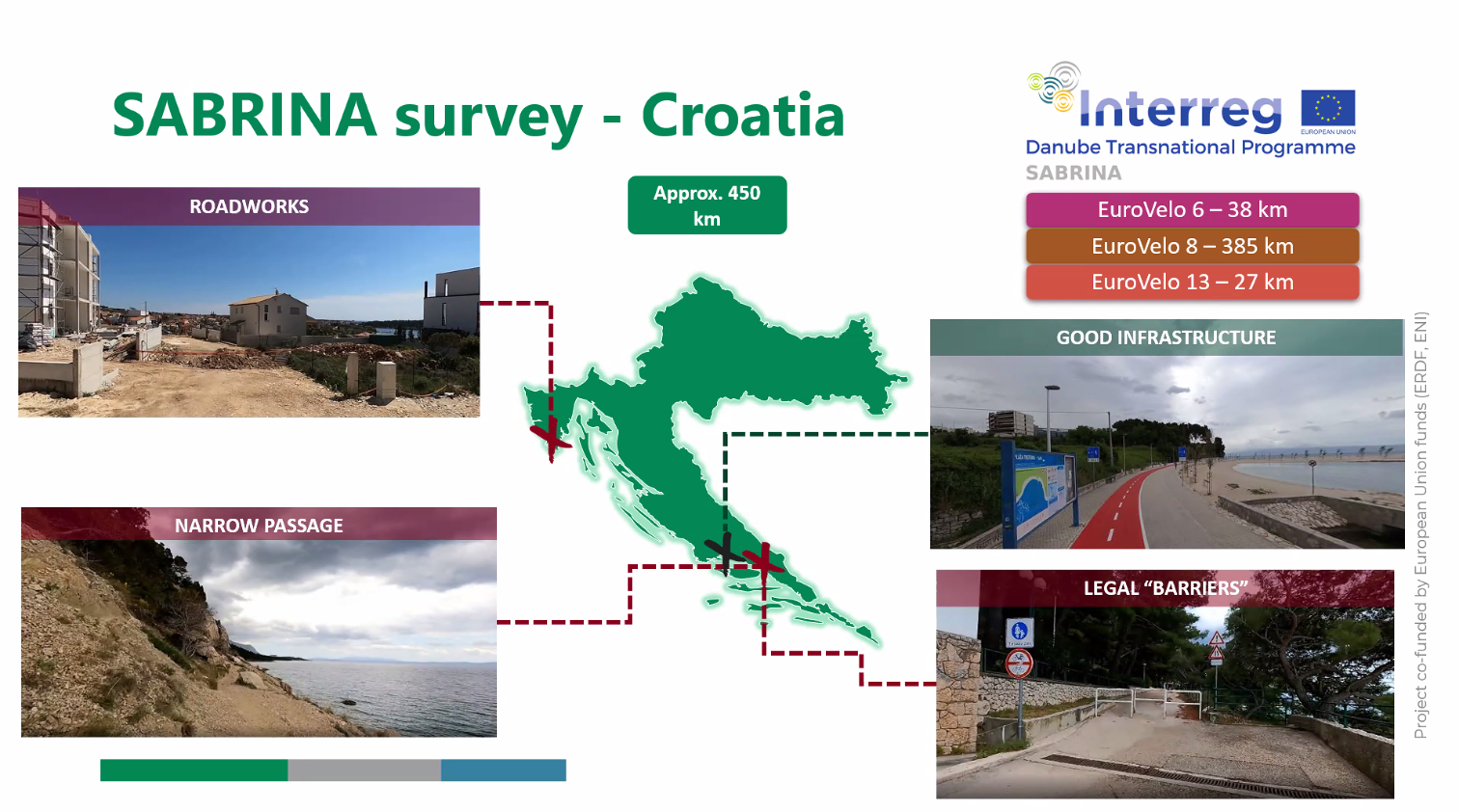SABRINA - CYCLING INFRASTRUCTURE WAS ONE OF THE DANUBE REGION TRANSPORT DAY 2021 FOCUSES
22-12-2021
The 6th stakeholder conference Danube Region Transport Day 2021, a joint event of the European Union Strategy for Danube Region PA1b coordinators and United Nations Economic Commission for Europe (UNECE) took place online on 17 December 2021 and attracted more than 50 participants.
The conference was opened by welcome speeches from Yuwei Li (Director of UNECE), Tamara Delić (Assistant Minister, the Ministry of Construction, Transport and Infrastructure, Serbia) and Darko Trajanov (Director General for Sustainable Mobility and Transport Policy, Ministry of Infrastructure, Slovenia). The plenary sessions with 19 distinguished speakers focused on financing transport in the next financial period 2021–2027, transforming railways in the Danube macro-region, and cycling infrastructure gaining importance in times when individual transport is important for commuting and pleasure.
During the last plenary session, focusing on cycling, Marko Sevrovic from the European Institute of Road Assessment – EuroRAP, the lead partner of the SABRINA project, presented the experiences from EuroVelo cycling infrastructure safety surveys in the Danube region. Marko first explained EuroVelo long-distance cycling routes, their objectives and the SABRINA project plan for safety inspections of those bicycle routes, crossing Danube countries involved in the project. The participants have learned how the survey car and bicycle look like and which methodologies we use to assess the safety of the EuroVelo routes. It was very interesting to see the photos of the safety inspections from the countries inspected so far: Croatia, Slovenia, Austria, Bulgaria and Romania. Marko wrapped up with a thought that it is very important to keep in mind the users when planning the cycling infrastructure. “If users find a more convenient way to use the infrastructure, they will, regardless of the original purpose.” (see the image below)
The presentations from the conference are available on the European Union Strategy for Danube Region PA1b webpage. 

![]()



